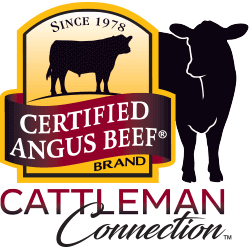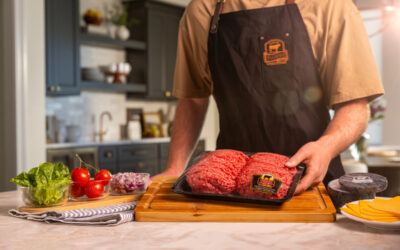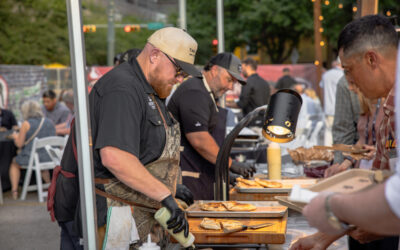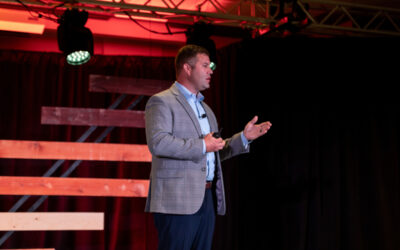
Prices rise for a reason

Looks like everybody’s hands are raised (if not, I must ask, what cave do you inhabit?). If I had to venture a bet, I’d say it ranks as the second highest “rising” phrase right now, just behind “rising gas prices” and ahead of “rising input costs.” No data to prove that, just a big ol’ fat guess. Anyway…
Whenever prices go up, it seems like we’ve got all kinds of finger-pointing going on. “I’m not striking it rich. It must be the next guy.” When folks on the production side of the equation head to a restaurant, a little cowboy math leads them to believe they’re getting the raw end of the deal.
Myth: Restaurateurs are just using the high prices of corn and other inputs as an excuse to rip people off at the plate. They must be making a killing!
Fact: It’s no secret that everyone—from producers to packers to foodservice folks—are in the business to make money. But the reality is that it takes a lot of work to get that beef from packer to plate, and that work comes with a price tag, which is then passed on to the consumer.
Have you ever stepped back to think of all the costs that go into that porterhouse or strip steak? Well if a distributor were to list out all their individual costs beyond the obvious cost of the meat, they would be numerous; but here’s a snapshot:
- Food safety tracking and testing
- Labor: From warehouse workers and cutters to packagers and truck drivers.
- Plant overhead (somebody’s got to pay the light bill) and all that fuel for deliveries (you, know, that’s rising, too)
- Equipment and supplies (vacuum-packing film, knives, mesh gloves, etc.)
- Liability insurance, salaries for the sales force and all the related staff
And then to top it off, there’s a certain chunk of change that goes toward “bad debt” or customers unable to pay their bills.
That’s all before it gets to the steakhouse’s back door, where those businesses also have light bills and employees to pay, plus the need to provide a pleasing ambiance and delicious food to each and every customer—even on the slow nights. (Ever seen a waitress reading a paper instead of serving? That’s a nightmare for somebody trying to balance wages with sales.)
Last week our team chatted with Gale Rhoads, CAB executive account manger (i.e. works with people on “the other side” of the business.) And when food cost came up, he brought up some great points. In order to remain competitive most foodservice people will take a lower margin on a beef items than they will on chicken so that they don’t “price themselves out of the market.” (Kind of puts that “outrageous food price” into perspective, huh?)
He added, “It’s wonderful to see this margin opportunity for the producer, because they go through some trying times, without a doubt. They’re seeing increasingly challenging times now on the other side of the business–the costs of their raw materials, those primal or cut steaks, are higher now as well. A lot of them can’t change their menu weekly because of the cost of printing and things of that nature. It cuts into their margin.”
So when times are tough for beef-sellers (like they are now) they’re tough for a while.
When I wrote a series on this a while back, the word on the street was distributors are hoping to make 3% to 5% on the profit and restaurateurs have to mark up food 2 to 3 times just to aim for that 5% mark, too.
I’d invite you to read those articles:
Even though economics may have changed some since 2009, the concepts are still the same. I’ve been a waitress (Perkins helped pay my way through college) and a producer (raising cattle did the same) but I learned a whole lot about all that “in between” from the people I chatted with. Hope you do, too!
May your bottom line be filled with black ink,
~Miranda
You may also like
Success, Despite Challenges
Today’s market is complex and competitive. The collective effort of stakeholders across the supply chain positions Certified Angus Beef to meet the record demand for premium beef moving forward. Signals across the beef industry are clear and Angus farmers and ranchers seeking high-quality genetics that deliver premium beef are producing a product in high demand.
Keep the Supply Coming
A record-high 800 registrants from 17 countries gathered in Austin, Texas, to learn more about CAB, become inspired by the culinary work of chefs and pitmasters, and celebrate sales and production success. But at the forefront: supply and demand, a reflection of the chaotic past year, and preparing for what’s ahead.
Consumer Demand, Power of Quality
Demand for high-quality beef persists. But with that demand comes challenges. From tight cattle supplies to higher costs and increasing pressure on retailers to deliver a consistent eating experience, the pressure is on. David O’Diam, CAB VP of retail, addressed the current retail beef environment, highlighting both opportunities and challenges in today’s marketplace.



